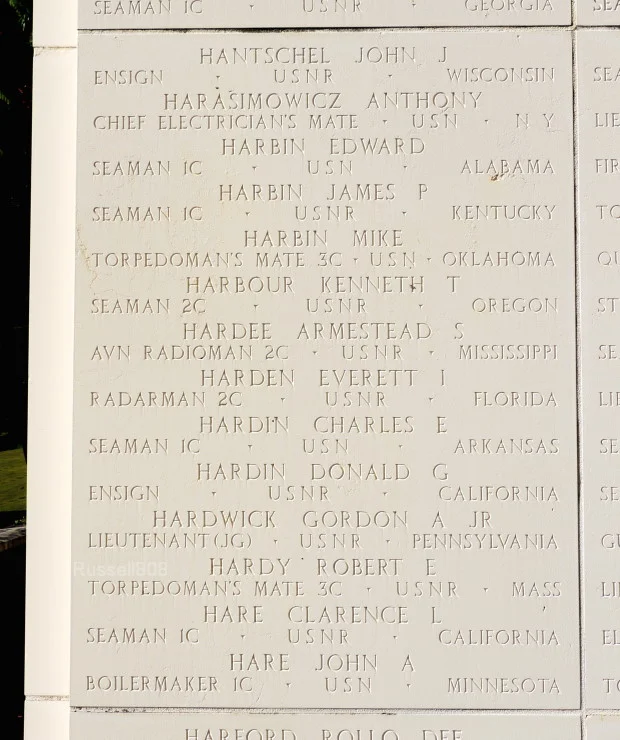(Photo provided by Kimberly King)
On 25 July, 1945, Ensign Hantschel flew the capable F6F-5 Hellcat (Bureau Number BUNO 77934) single-seat fighter from the aircraft Carrier (CV15) USS Randolph to attack gun placements near Kure Harbor. He and a fellow squadron pilot, Ensign C. B. Yoder, was were shot down by AA and crashed in the Japanese Seto Inland Sea, near the island of Shikoku. The report, below, describes how John Hantschel was heroically protected by another pilot. He was less fortunate than Yoder, who was rescued by a lifeguard submarine. Hantschel was listed as missing in action (ref.: Douglas Campbell, Vol. 2) with no further information obtained until historian Shigeaki Mori researched his fate.
Excerpt from the U.S.S. Randolph Report of Casualties (ref.: FOIA).
Initially, other attack planes from the USS Randolph were able to drive away Hantschel’s captors.
Lt(jg) Hantschel was awarded the Distinguished Flying Cross (Posthumously) for extraordinary achievement while participating in aerial flight as Section Leader in Fighting Squadron Sixteen (VF-16) embarked in U.S.S. RANDOLPH, over Kure, Japan, 25 July 1945.
Naval aviator John Hantschel, of Appleton, Wisconsin.
Was assigned to the Aircraft Carrier USS Randolph as a pilot of the VF-16, who were known as the Pistol Packing Airedales.
Insignia of the Pistol Packing Airedales
He is remembered







